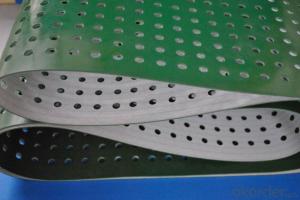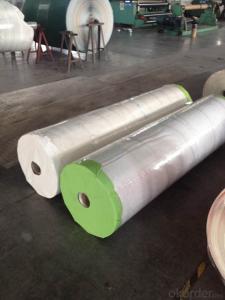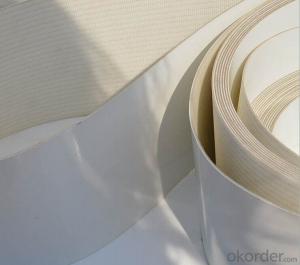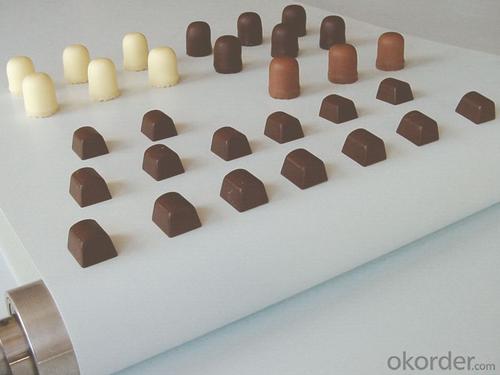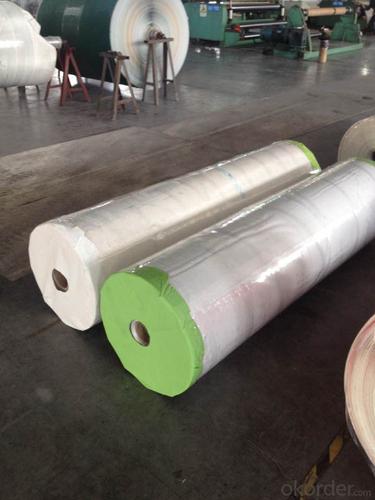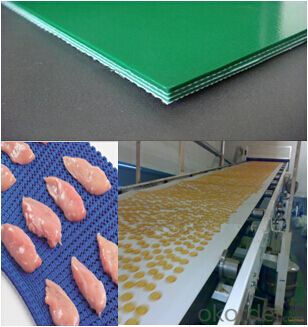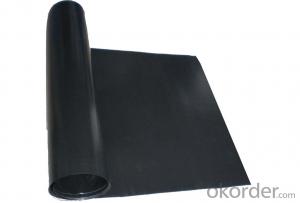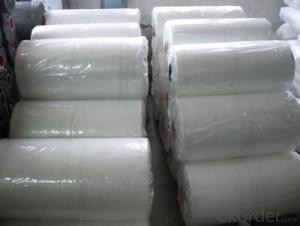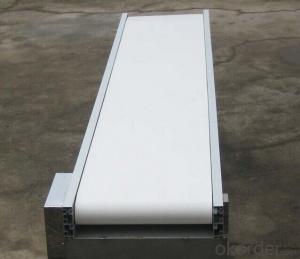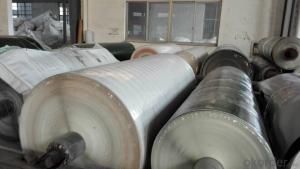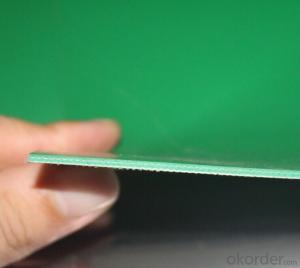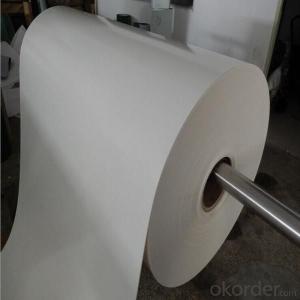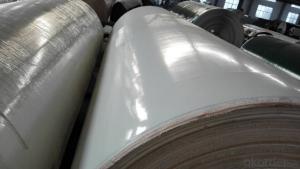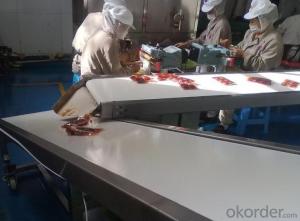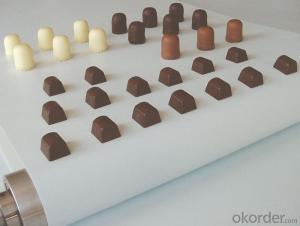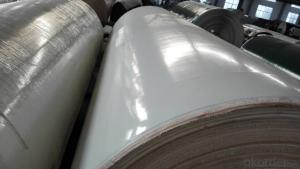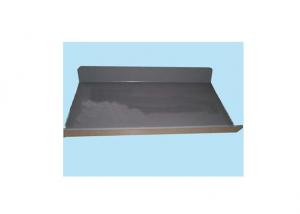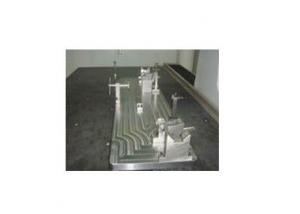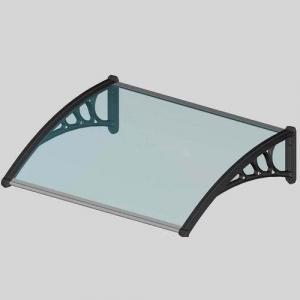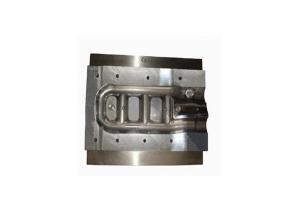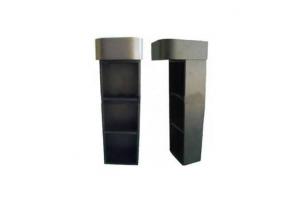Different Types Food Grade Belting Flat PVC&PU Conveyor Belting
- Loading Port:
- China main port
- Payment Terms:
- TT OR LC
- Min Order Qty:
- 10 m²
- Supply Capability:
- 5000000 m²/month
OKorder Service Pledge
OKorder Financial Service
You Might Also Like
Different Types Food Grade Belting Flat PVC&PU Conveyor Belting
The proporties of PVC Food conveyor belt
PVC type conveyer belt's upper and lower layers are PVC coating cover, single-sided tape thickness: ≥1.0mm; PVG type belt's upper and lower layers are nitrile rubber and PVC, single-sided tape thickness: 1.5mm-4.5mm.
PVC type conveyer belt's inclined angle: <16°
PVG conveyer belt's inclined angle: <20°
Specifications of PVC food conveyor belt
1.width: 300mm-1800mm
2.thickness:4mm-30mm
3.number of piles:1-6 ply
4.tensile strength:8Mpa-20Mpa
Flame retardant conveyer belt is made from the whole belt core via dipping and plastifying in polyvinyl chloride (PVC) dipping agent or sulfuration. It features largely in the high strength, large freight volume and stable conveyance performance. Besides, it is fire retardant, anti-static, shock resistant, wearable and corrosion resistant
Conveyor Belt Photos

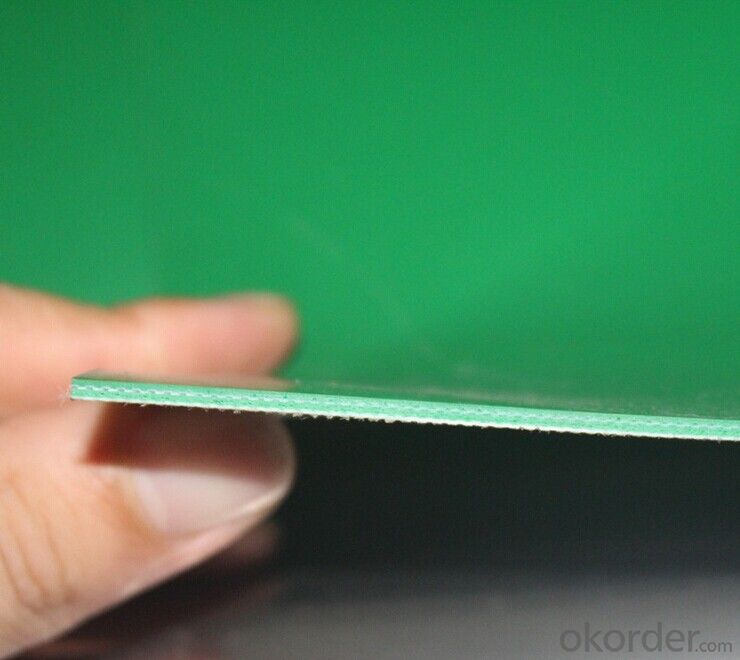
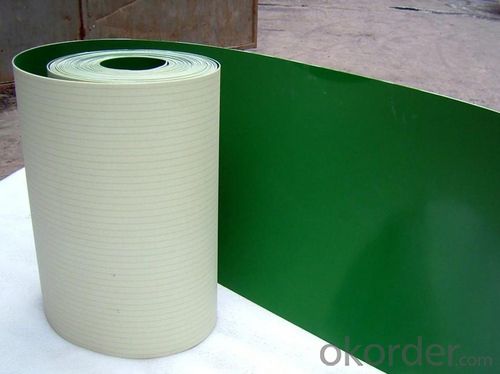
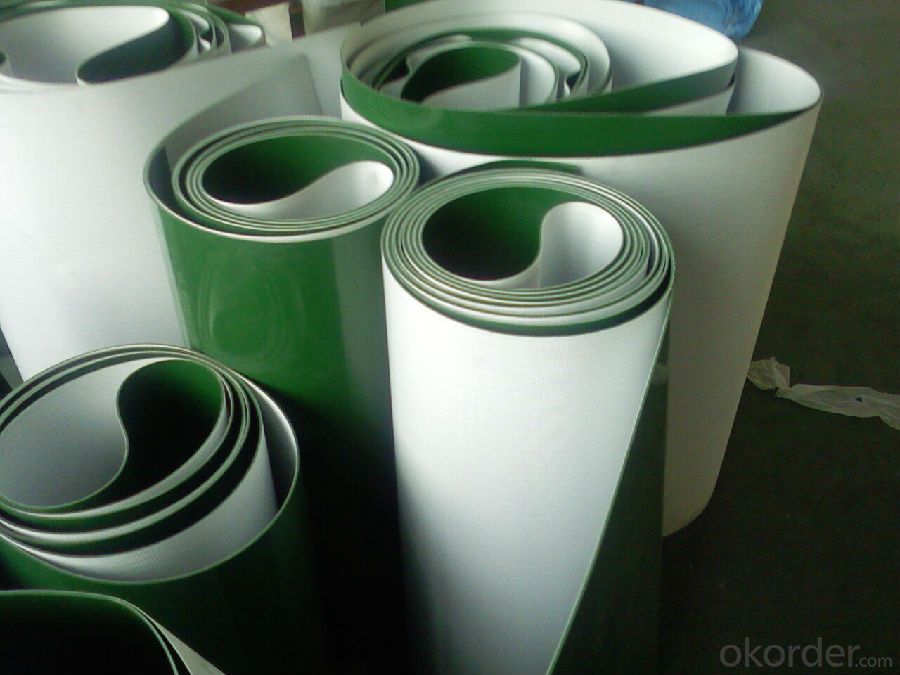
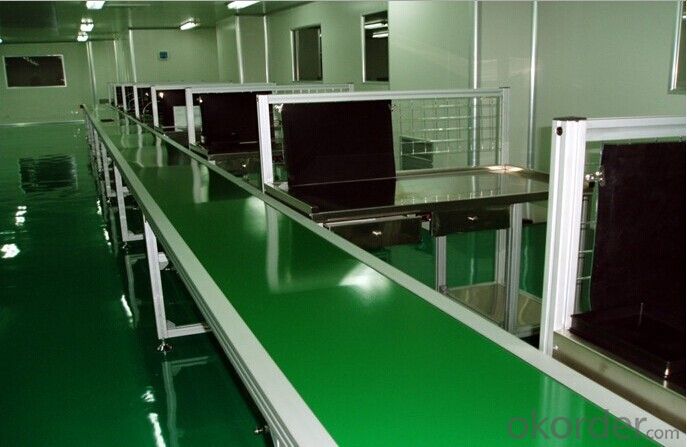
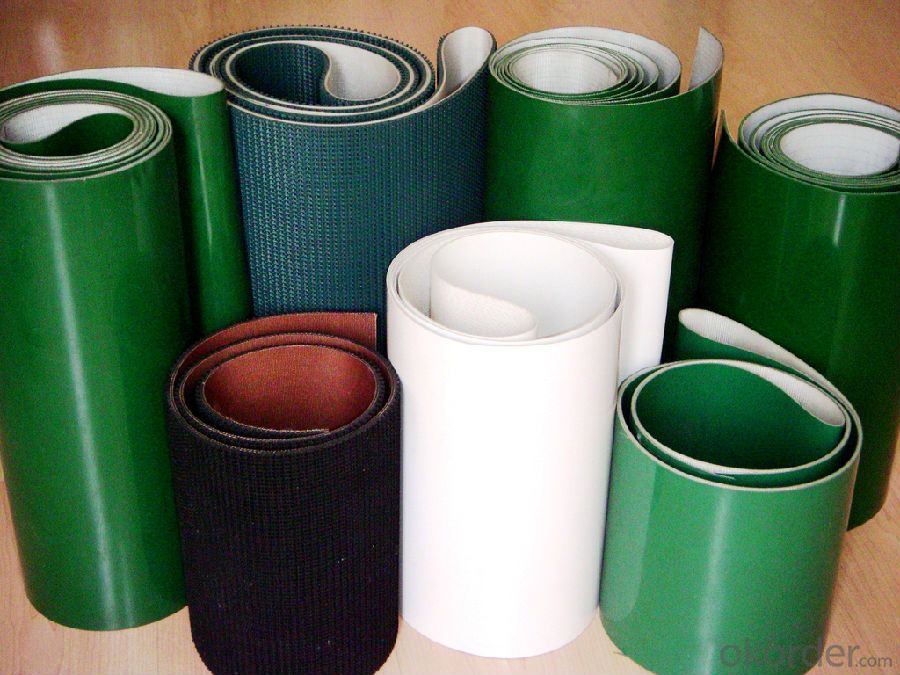
FAQ
Q: Can you do OEM?
A: Yes, we can do OEM products based on your requirements.It's no problem.
Q: How can I get some samples?
A: 1, We are honored to offer you samples. New clients are expected to pay for the courier cost, the samples are free for you, this courier cost charge will be deducted from the payment for formal order.
2, Regarding the courier cost: you can arrange a RPI (remote pick-up) service upon Fedex, UPS, DHL, TNT, etc. to have the samples collected; or inform us your DHL collection account. Then you can pay the freight direct to your local carrier company.
Q: How do you do regarding quality control?
A: Quality is priority? We always attach great importance to quality controlling from the very beginning to the very end:
1)All raw material we used are environmental-friendly;
2)Skilful workers care every details in handling the producing and packing processes;
3)Quality Control Department specially responsible for quality checking in each process.
Q.What are your payment terms?
A: Standard payment terms are 30%T/T,and balance payment before shipment.
L/C at sight is acceptable
Other payment terms can be negotiable.
If you want to find more details about the PVC conveyor belt, you could make an Inquiry in okorder.com. Okorder.com provides you the products with best price and quality!
- Q: Do olive nets affect the taste of olives?
- No, olive nets do not affect the taste of olives.
- Q: Can olive nets be used in super-high-density olive orchards?
- Yes, olive nets can be used in super-high-density olive orchards. Olive nets are commonly used in olive orchards to protect the olives from birds and other pests. In super-high-density olive orchards where trees are planted closer together, the use of olive nets can still be effective in preventing damage to the olives.
- Q: Can olive nets be used for olive trees in containers?
- Yes, olive nets can be used for olive trees in containers. They can help protect the tree's fruit from birds and other animals while allowing air and sunlight to reach the tree.
- Q: How long do olive nets typically last?
- Olive nets typically last for several years with proper care and maintenance.
- Q: Are there any specific techniques for preventing olive net damage from hailstorms?
- Yes, there are specific techniques for preventing olive net damage from hailstorms. Some common techniques include installing hail netting above the olive trees, using anti-hail cannons or generators to disrupt hail formation, and applying anti-hail sprays or coatings on the olive netting to enhance its resilience against hail impact. Regular maintenance and inspection of the nets are also necessary to identify any damage and repair or replace them as needed.
- Q: How do olive nets affect air circulation in the orchard?
- Olive nets can hinder air circulation in the orchard by creating a physical barrier that limits the movement of air. This reduced air circulation can have various impacts on the orchard, including increased humidity levels, reduced sunlight penetration, and potentially increased risk of disease or pest infestation.
- Q: Are there any specific techniques for removing olive nets after harvesting?
- Yes, there are specific techniques for removing olive nets after harvesting. One common method is to gather the corners of the net and lift it up gradually, allowing the olives to roll off onto a collecting surface or tarp. Another technique involves using a shaking device or vibrating equipment to dislodge the olives from the net, making it easier to remove. It is important to handle the nets carefully to avoid damaging the olives or the trees.
- Q: Can olive nets be used on olive trees grown in pots indoors?
- Yes, olive nets can be used on olive trees grown in pots indoors. Olive nets are typically used to protect the olives from birds and other animals when they are grown outdoors. However, if you have an olive tree in a pot indoors and you want to protect the olives, you can still use olive nets to prevent any unwanted damage.
- Q: Are olive nets safe for wildlife?
- Yes, olive nets are generally considered safe for wildlife. These nets are designed to protect olive trees from birds and other animals that might damage the fruit. They are made of lightweight and durable materials, allowing wildlife to easily avoid them. However, it's crucial to ensure proper installation and regular monitoring to prevent accidental entanglement or harm to any wildlife that might come in contact with the nets.
- Q: What are the main defects of common plastic products?
- Uneven color or discoloration: discoloration of plastic or pigment due to improper distribution of pigments or fillers; uneven color on the surface of plastic products. Uneven color varies with the appearance of the reasons. Near the inlet is mainly uneven distribution of pigments, such as when the whole plastic products uneven color is caused by poor thermal stability of plastic, and the uneven color of the weld site is related to the nature of the pigment.Plastic products are fragile: because of bad plastics, obvious directionality, internal stress and plastic structure is not good, so that the strength of plastic products decreased, brittle, easy to crack (especially in the direction of material flow easier to crack).Bad mold release: because of excessive filling effect, bad mold release performance and other reasons, make plastic products difficult to release or after the release of plastic deformation and rupture, or plastic products residual direction does not meet the design requirements.
Send your message to us
Different Types Food Grade Belting Flat PVC&PU Conveyor Belting
- Loading Port:
- China main port
- Payment Terms:
- TT OR LC
- Min Order Qty:
- 10 m²
- Supply Capability:
- 5000000 m²/month
OKorder Service Pledge
OKorder Financial Service
Similar products
Hot products
Hot Searches
Related keywords


